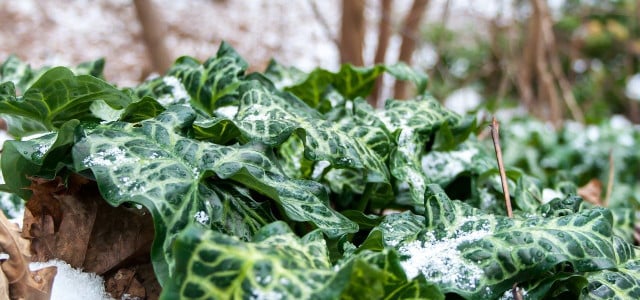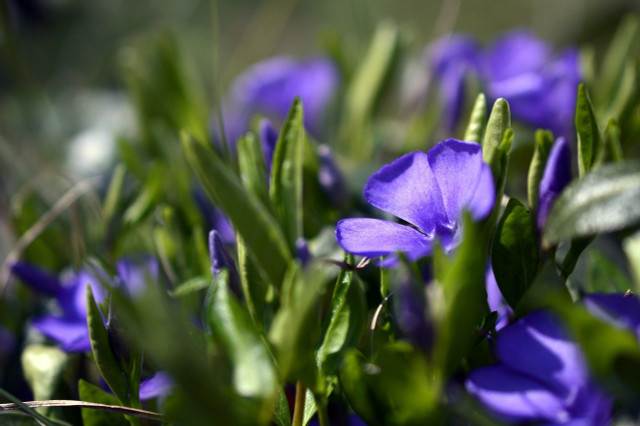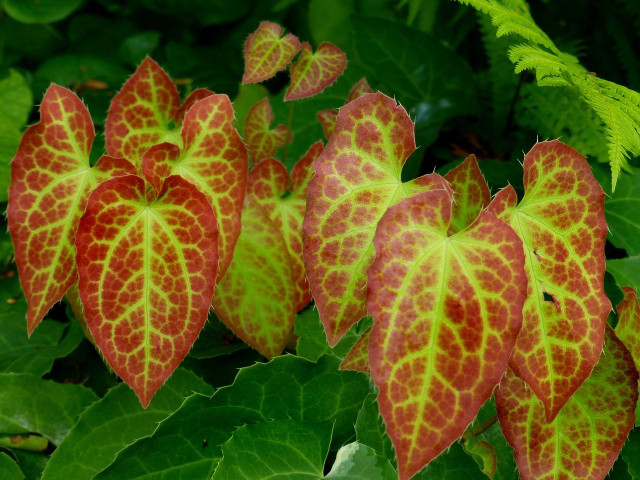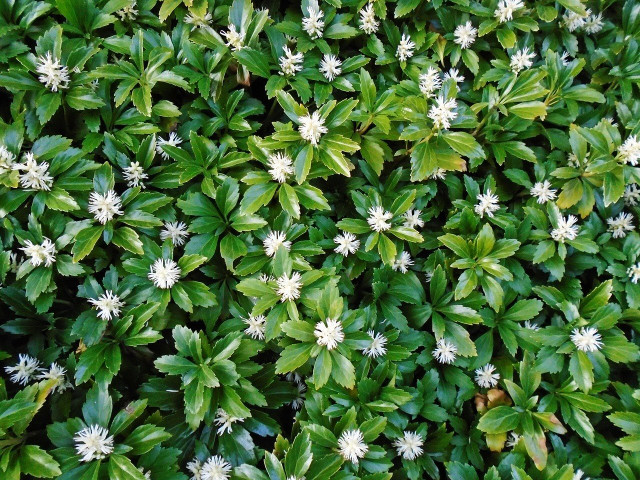
Evergreen groundcovers are a great way to add large scale planting to the garden. The plants are usually very robust and do not require much care.
Groundcovers are herbaceous plants that allow you to plant large areas in your garden with low maintenance. They are often very robust and only grow to a limited height.
By the way, ground covers provide shelter and protection for insects and other animals in the fall and winter. By planting evergreen ground covers, you make your garden more insect-friendly.
Contents
Evergreen ground cover: small periwinkle

Small periwinkle, Latin Vinca minor, belongs to the semishrubs and grows to a maximum height of 30 centimeters. Its oval leaves are dark green and have a glossy, leathery surface. The pretty, small flowers bear five petals each.
The periwinkle is green all year round, but its lilac-blue flowers appear from April until September.
If you want to use the plant in your garden, you should consider the following:
Find a sunny or at least partial shade location for the evergreen groundcover. It will also grow in the shade, but will produce fewer flowers there.
The soil is ideally rich in humus and nutrients and well-drained. The plant tolerates lime and also does well with acidic soil.
The ground cover does not need much care: Now and then you should remove the weeds around it and occasionally fertilize with bark mulch or horn shavings. In longer dry periods you should water the evergreen ground cover regularly.
Tip: The varieties Anna, Marie and Elisa are well suited.
The small evergreen is also suitable if you want to create an insect-friendly garden. The flowers attract bees, bumblebees and butterflies.
For shady places: Yellow ivy flower

As its name suggests, yellow ivy flower bears dainty yellow flowers on delicate stems in spring. Its leaves, in contrast, are quite large and robust, tapering to heart-shaped. The plant grows like a dense carpet, making it an excellent evergreen groundcover for the garden. The fragrance of the flowers attracts insects in the spring.
Tip: If you want your plant carpet to be really dense, you should plant about eight to nine of the evergreen plants per square foot.
Like most evergreen groundcovers, yellow ivy is fairly low maintenance:
- Find it a partial shade to shady, wind-protected spot in your garden.
- In spring, cut or pluck out the old foliage and fertilize with some compost.
- When temperatures drop in winter, protect the plant with mulch or fall leaves.
- In long dry periods, you should also water the plant a little. For example, you can use stale rainwater.
Evergreen ground cover: Pachysandra Terminalis

Suitable for shady locations: Pachysandra Terminalis
You can plant the thicket, also called ysander, in a shady spot in your garden. Important: The evergreen ground cover is poisonous in all parts, so you should not plant it if you have pets or small children.
A characteristic of the thicket is that it spreads enormously. As a result, it effectively suppresses weeds. Like most other evergreen groundcovers, it doesn’t require much maintenance from you:
You don’t need to remove fallen leaves, as they quickly disappear under Pachysandra Terminalis
The soil does not have to meet any special requirements. It should only be well-drained and not too wet.
Until the soil is completely overgrown, you should weed regularly. Once the soil is densely overgrown, this work is not necessary.
Once a year, preferably in the fall, you can fertilize the chickweed with some mature compost.
Tip: There are species with unicolored and bicolored leaves. You can plant them together without any problems.

